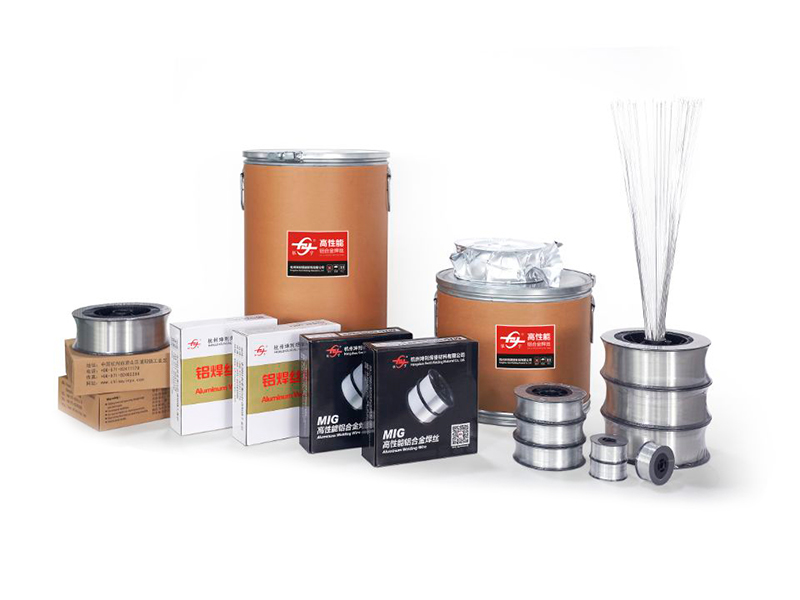How to Weld Aluminum Using Aluminum MIG Wire
Aluminum MIG Wire is designed for use with the spray transfer welding process, primarily on 5000 series aluminum base metals. It is typically used for structural welding, marine applications, automotive bumpers and support, railcars, trailers and truck panels. It can be used in a variety of applications, but it is most effective when working on abrasive aluminum materials. It is a good choice for welding thicker sections of aluminum and can be combined with 100% argon or mixed gas shielding gases.
Aluminum is a very good conductor, drawing the heat away from the weld pool faster than other metals. This can make it challenging to maintain the proper weld puddle size and achieve penetration with thinner materials. It is also common to experience poor starts when MIG welding aluminum, due to not having enough heat applied to the material at the start of the weld.
To address these challenges, the welding speed needs to be increased when welding aluminum. This will help keep the arc on the material and prevent burning the tips of the contact tip. It is also important to use a longer wire stick out when MIG welding aluminum, as it helps with shielding gas coverage and reduces weld bead contamination.
Proper handling and storage of the aluminum wire is essential to ensure quality welds. When possible, store the wire in its original box or other protective cover to minimize moisture. This is especially important when working outdoors, as condensation can lead to poor welds and abrasion of the wire surface. It is also important to store the wire in an area that is of a similar ambient temperature to where it will be used.
In addition to maximizing welding speed and using the proper stick-out distance, proper drive roll tension is also critical for successful MIG welding of aluminum. Too little drive pressure can cause feeding problems, while too much can deform the wire and create abrasions. It is recommended to experiment with different drive roll tension settings to find the optimal setting for your specific machine and environment.
Another common misconception is that a push-pull gun setup is required for MIG welding aluminum. This is not always the case, as most reputable machines will allow for successful aluminum GMAW with standard torch set ups. A push-pull gun does help minimize feeding issues, however, and is a great option for those experiencing these problems.

ER4047 Aluminum Mig Welding Wire
4047 is a 12% Silicon Aluminum filler metal which has excellent corrosion resistance and low melting point ensuring a very low number of deformations in the parent metal, recommended for welding alloys as 1060, 1350, 3003, 3004, 5052, 6060,6061,6063,etc. and casting Al alloys, such as 710.0,711.0.

ER4047 Aluminum Mig Welding Wire
4047 is a 12% Silicon Aluminum filler metal which has excellent corrosion resistance and low melting point ensuring a very low number of deformations in the parent metal, recommended for welding alloys as 1060, 1350, 3003, 3004, 5052, 6060,6061,6063,etc. and casting Al alloys, such as 710.0,711.0.
PREV:Aluminum Welding Wire is available in a variety of alloys and packages
NEXT:What are the key advancements and challenges in Aluminum Alloy Welding Wire technology that impact its application across diverse industries?
NEXT:What are the key advancements and challenges in Aluminum Alloy Welding Wire technology that impact its application across diverse industries?
Related Products
-
 View More
View More
5154 Aluminum Alloy Welding Wire
-
 View More
View More
ER4043 Silicon Aluminum Welding Wire
-
 View More
View More
ER4047 Aluminum Mig Welding Wire
-
 View More
View More
ER5154 Al-Mg Alloy Wire
-
 View More
View More
ER5087 Magnesium Aluminum Welding Wire
-
 View More
View More
Aluminum Welding Wire ER5183
-
 View More
View More
Aluminum Welding Wire ER5356
-
 View More
View More
ER5554 Aluminum Welding Wire
-
 View More
View More
ER5556 Aluminum Welding Wire
-
 View More
View More
ER1100 Aluminum Welding Wire
-
 View More
View More
ER5754 Aluminum Welding Wire
-
 View More
View More
ER2319 Aluminum Welding Wire
 English
English Deutsch
Deutsch
 English
English Deutsch
Deutsch

